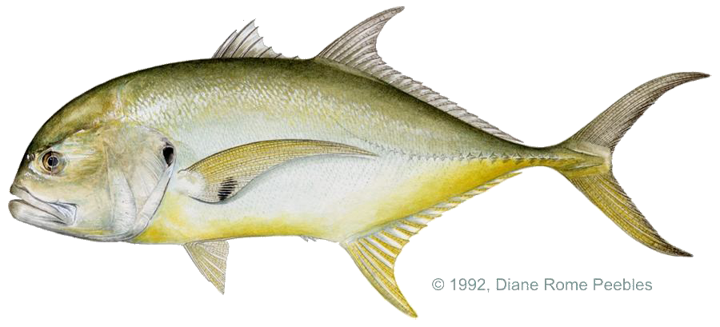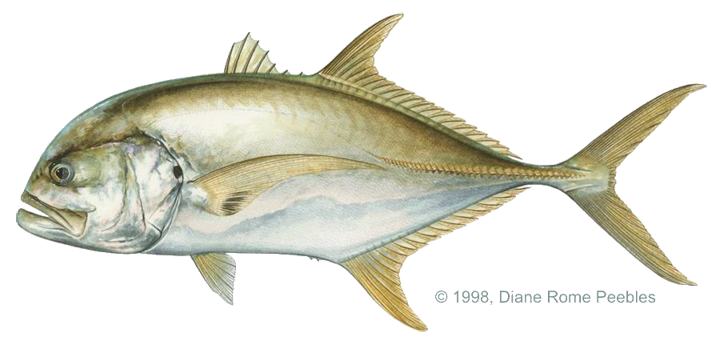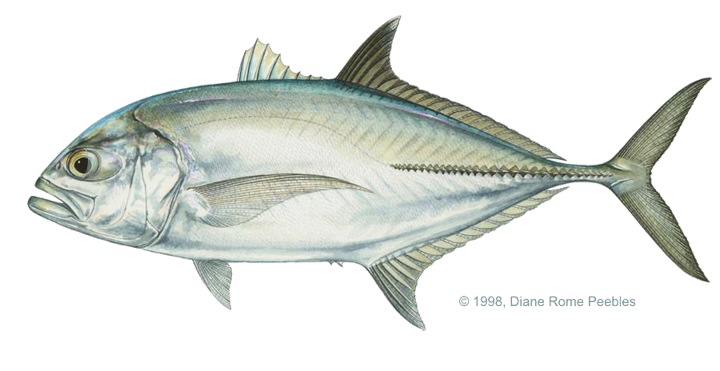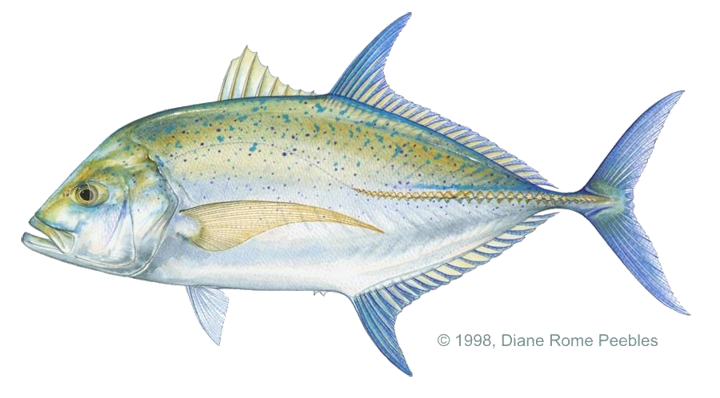Game Fish Identification Reference Guides
Jack, horse-eye
(Caranx latus)
(Caranx latus)
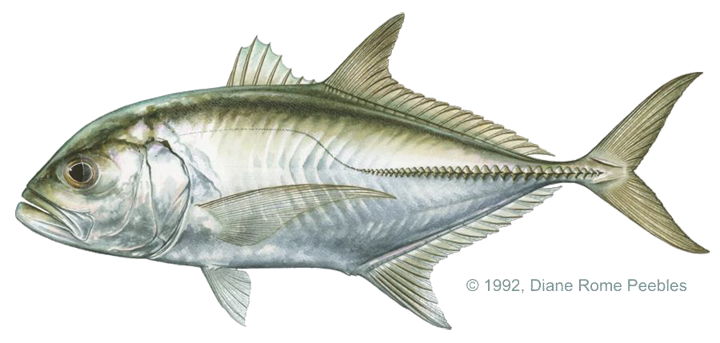
Agassiz, 1831; CARANGIDAE FAMILY; also called goggle eye
Occurs throughout the Atlantic Ocean; New Jersey on the U.S. coast to Rio de Janeiro, Brazil, including Bermuda, the Bahamas and West Indies in the western Atlantic and off the coast of Africa in the eastern Atlantic. In the Pacific and Indian oceans it is replaced by its close relative, the bigeye trevally, Caranx sexfasciatus.
It occurs in small schools around off shore islands and reefs, deep bluewater holes, channels adjacent to flats, and in shore along sandy beaches. It is also known in brackish water and, occasionally, in freshwater coastal rivers and streams.
The body is compressed, though the profile of the head is not as vertical or as blunt as in large crevalle jacks, Caranx hippos. The eyes are characteristically of the horse-eye jack are large and have thick, adipose eyelids. There is a small black spot on the operculum, but there is no spot on the pectoral fin as in the crevalle jack. The straight portion of the lateral line has 32 39 scutes.
It feeds primarily on fish, but also on shrimp, crabs, and other invertebrates. It is a good light tackle game fish that can be taken with live baits such as mullet, pinfish, or other small fishes, as well as with plugs, jigs, spoons and flies. Lures should be retrieved at a fast pace without slowing or stopping.
Like other jacks, it is edible but not highly esteemed as a food fish. The flesh is dark and relatively tasteless, though this can be improved by cutting off the tail and bleeding the fish immediately after capture. It is one of many tropical species which have been implicated in ciguatera poisonings (see barracuda, great)
Occurs throughout the Atlantic Ocean; New Jersey on the U.S. coast to Rio de Janeiro, Brazil, including Bermuda, the Bahamas and West Indies in the western Atlantic and off the coast of Africa in the eastern Atlantic. In the Pacific and Indian oceans it is replaced by its close relative, the bigeye trevally, Caranx sexfasciatus.
It occurs in small schools around off shore islands and reefs, deep bluewater holes, channels adjacent to flats, and in shore along sandy beaches. It is also known in brackish water and, occasionally, in freshwater coastal rivers and streams.
The body is compressed, though the profile of the head is not as vertical or as blunt as in large crevalle jacks, Caranx hippos. The eyes are characteristically of the horse-eye jack are large and have thick, adipose eyelids. There is a small black spot on the operculum, but there is no spot on the pectoral fin as in the crevalle jack. The straight portion of the lateral line has 32 39 scutes.
It feeds primarily on fish, but also on shrimp, crabs, and other invertebrates. It is a good light tackle game fish that can be taken with live baits such as mullet, pinfish, or other small fishes, as well as with plugs, jigs, spoons and flies. Lures should be retrieved at a fast pace without slowing or stopping.
Like other jacks, it is edible but not highly esteemed as a food fish. The flesh is dark and relatively tasteless, though this can be improved by cutting off the tail and bleeding the fish immediately after capture. It is one of many tropical species which have been implicated in ciguatera poisonings (see barracuda, great)













